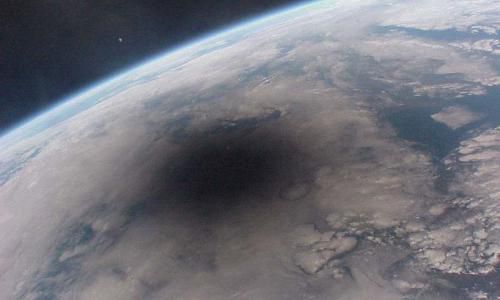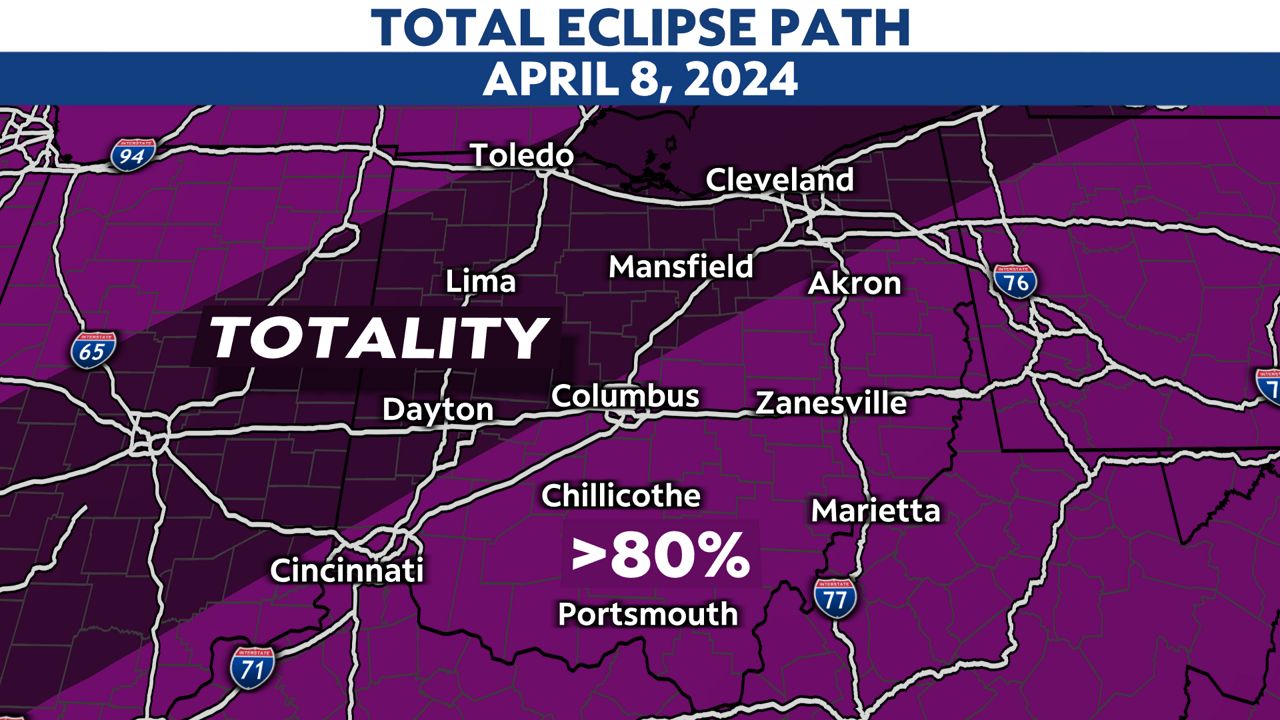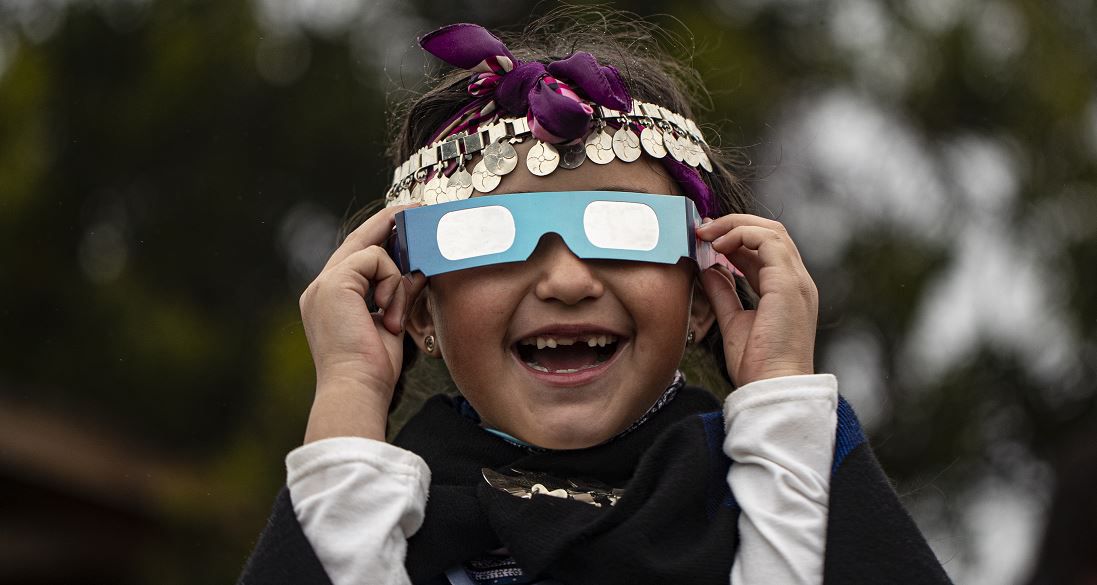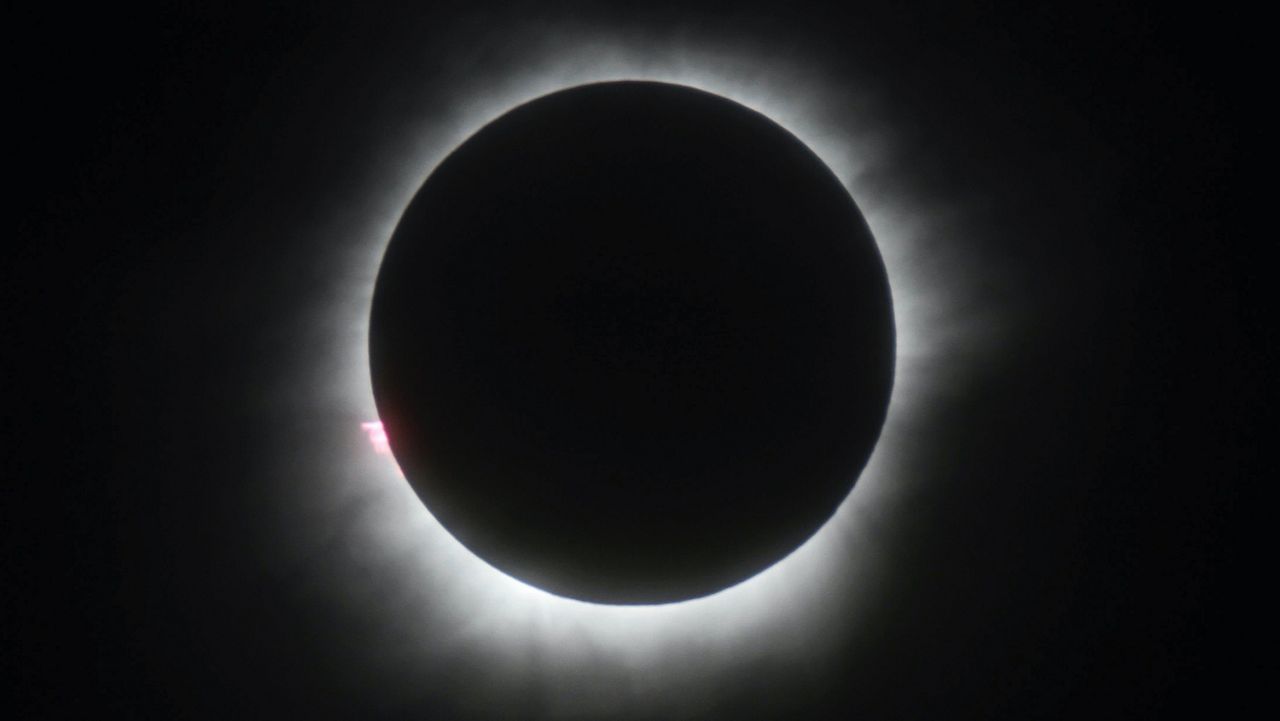Back in the summer of 2017, millions across North America witnessed a total solar eclipse, and it was a sight to see (with, of course, special glasses). We are now less than a year away from the next total solar eclipse, and Ohio has a front-row seat!
The total eclipse for North America will occur on Monday, April 8, 2024.
A solar eclipse happens when the moon passes between the sun and Earth.
A total solar eclipse occurs when the moon blocks all the sun’s light, which casts a shadow on part of the Earth. This path is known as the path of totality. To experience total darkness during the eclipse, you have to be in the path of totality.

We have some of the best potential views, as parts of Ohio will be in the path of totality during the eclipse in 2024! The last total solar eclipse visible in Ohio was in 1806.
The centerline of the eclipse enters Ohio on April 8, 2024 at approximately 1:52 p.m., with totality beginning there at about 3:08 p.m.
This eclipse paints a bullseye on several large cities in Ohio and barely misses a couple of others.

Dayton is one of the lucky cities where totality will last for about two minutes and 45 seconds. That's longer than the maximum duration anywhere in the 2017 eclipse, but is considered merely respectable for the four-minute-plus eclipse of 2024. South of Dayton, the path of totality edges over the Cincinnati metro.
A total solar eclipse hasn't occurred in what is present-day Cincinnati since the year 1395, and there won't be another one for another millennium. It's a quick and easy trek into the eclipse path, however, and eclipse fans can use Cincinnati as a convenient home base with plenty of lodging. From Cincinnati, Interstate 75 runs through Dayton and eventually meets up with the eclipse centerline (where totality will be the longest).
Toledo is situated right along the western edge of the total eclipse path, with totality lasting for about one minute and 47 seconds downtown. Durations decrease quickly as you go north and west, and a small area of northwestern Toledo is outside the path.
On the other side of the eclipse path, Columbus is right on the edge of the path. Although some areas in the northwestern part of the city are inside the path of totality, most of Columbus will experience only a partial solar eclipse. But, its wealth of lodging options and its extremely close proximity to the path will make the city a great base camp for expeditions into the totality zone.
Once the eclipse is about halfway through the state, the western edge of totality hops out of the U.S. and into Canada, not to re-enter again until Maine. This is also when the centerline and the western side of the eclipse path head out into Lake Erie. While it won't be July or August, you can bet that plenty of boaters will be out on the lake to witness the show from the water.
Cleveland is near dead center of the path of totality. Its totality will last for three minutes and 49 seconds. With such a long duration of darkness and with plenty of lakeside viewing spots–even if they are chilly–Cleveland will certainly be rocking on April 8, 2024. Interstate 90 parallels the centerline from Cleveland all the way to the Pennsylvania border.
West of Cleveland, I-90 crosses the centerline as it curves around the lake and heads to Toledo. South of Cleveland, Akron is in the path, with totality lasting for about two minutes and 50 seconds.
The centerline of the eclipse exits the state over Lake Erie at about 4:30 p.m., with totality ending in that location at about 3:19 p.m. From the Indiana-Ohio border to the Ohio-Pennsylvania border, the moon's shadow travels 262 miles along the centerline in about seven minutes at an average speed of 2,245 miles per hour.
It's best to enjoy this upcoming total solar eclipse, because the next one Ohio experiences won't be until 2099!
If you remember from 2017, the demand for protective viewing glasses was high! The good news is you have plenty of time to plan ahead and get your next pair for 2024.

They're key to viewing the eclipse, as you must wear them the entire time you're looking at the sun, with one exception. If you're in totality when the moon completely blocks the sun, you can safely slip the glasses off until the sunlight comes back again.
Our team of meteorologists dives deep into the science of weather and breaks down timely weather data and information. To view more weather and climate stories, check out our weather blogs section.



